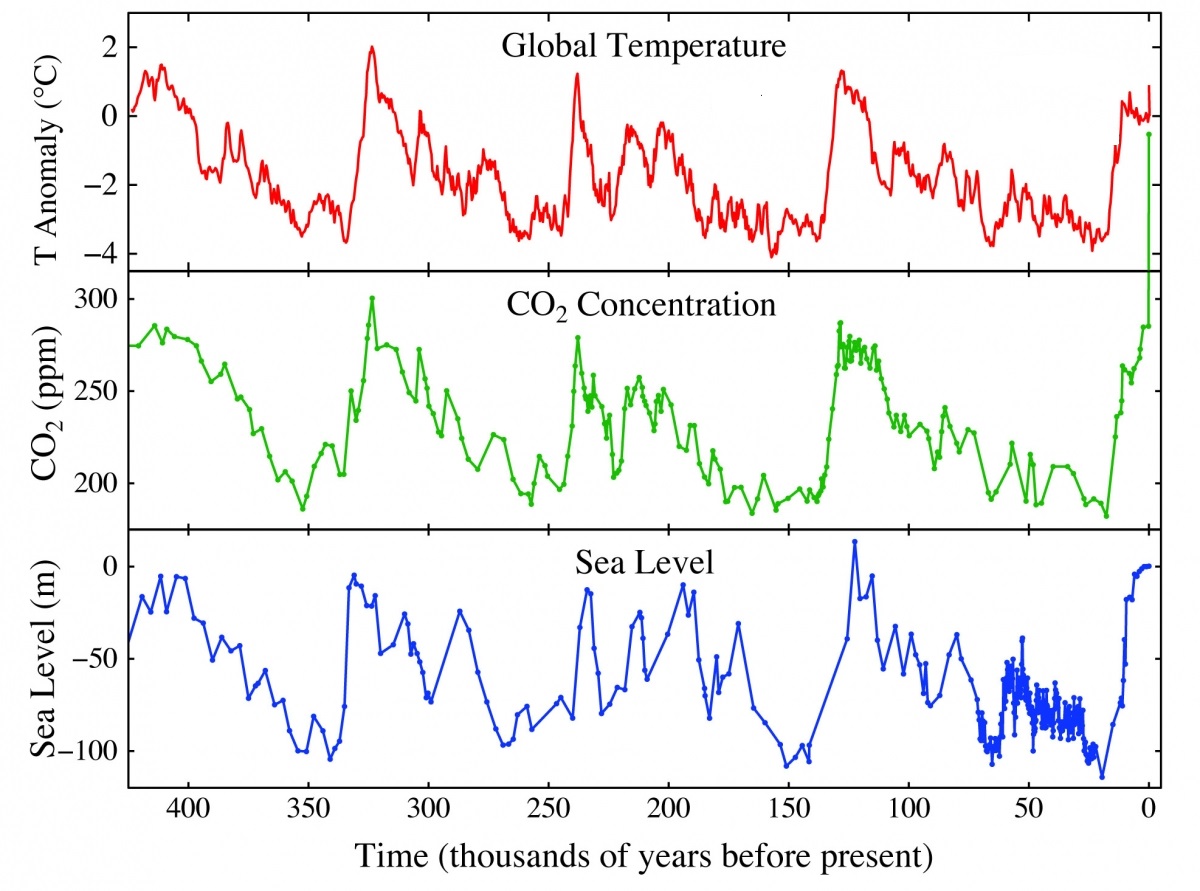EXPLORATION 1A
A Comparison of Global Temperature Anomalies, CO2 Concentration, and Sea Level Over 400,000 Years
Throughout Earth’s geologic history, you learned that the planet’s average global temperature anomaly and CO2 concentrations have fluctuated. Periods when glaciers and ice sheets extended across large portions of Earth’s surface are known as glacial periods. Interglacial periods occur when large amounts of that ice melts. You may remember from a previous module that we are in an interglacial period of an ice age now. An ice age is a long period of climatic cooling, during which continents have repeated glaciations (glacial periods) interspersed with interglacial periods. However, there have also been times in our distant geologic past that temperatures were as much as 8˚C to 15˚C warmer than today. During these “hot” times, Earth’s polar areas were not covered with ice. View what it would like if we had no polar ice on Earth today.
In this exploration you will analyze global average temperature anomalies, CO2 concentrations, and global average sea level. Use the figure of global temperature anomalies, CO2 concentrations, and sea level over the past 400,000 years to answer the following questions.
***To print this exploration and record your responses, download this PDF document .***
Compare the graphs global temperature anomalies (°C), CO2 concentrations (ppm), and sea level (m).
- What general similarities do you observe?
- What general differences do you observe?
- The sea level shown in the graph is relative to our current sea level. Is there a time in the last 400,000 years when sea level was higher than today? If so, approximately when and approximately how much higher was it then?

